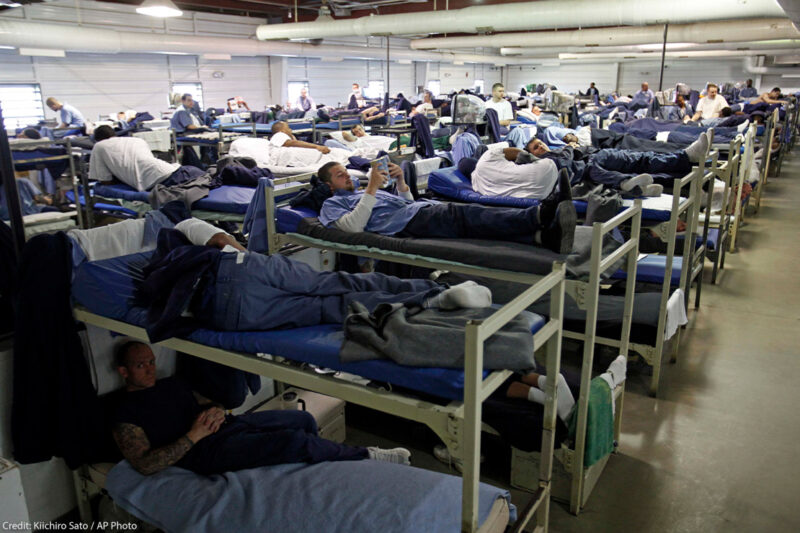Our Leaders Have the Power to Decarcerate and Save Lives, But Where is the Will?


Research shows that reductions in the United States incarceration rate would have prevented millions of COVID-19 cases and tens of thousands of deaths, both inside jails and prisons and in their surrounding communities. For those of us working with incarcerated people during the pandemic, this confirms what we already know: decarceration will save lives and is a vital part of pandemic response. So why, with the Delta variant tearing through the country and a new, vaccine resistant variant discovered, are we not seeing more releases?
In part, this is due to a failure in leadership. Massachusetts Supreme Court Chief Justice Ralph Gants explained the dilemma in his comments on a lawsuit to increase releases from the state’s detention facilities: “We've got the governor saying, ‘Not my problem, I shouldn't be ordered to do something.’ We've got the Department of Correction saying, ‘We manage the prisons, the only thing we're involved with is medical parole,’ and now we've got the parole board saying that it's not their problem. So who's supposed to do it?" Justice Gants asked.
COVID releases that did occur prove that a range of government actors have the power to release people when they deem it appropriate. This is not a question of authority; it is a question of will.
Governors have the power to commute sentences, as they did everywhere from Washington state to North Carolina. State legislatures can pass bills to release people early, as New Jersey’s did. Corrections departments can expedite releases or release people early, as many states, including Wisconsin and Iowa’s, did. State courts can identify people for early release or appoint special masters to do this as they did in Maryland and Hawaii, or expand those eligible for release hearings as in Massachusetts. Federal courts can act similarly, as when a federal judge ordered federal immigration authorities to immediately release people from Pennsylvania prisons. Criminal judicial systems, superior courts, and district attorneys can adopt policies that fix the presumptive bail amount for certain charged offenses at $0, so that people are not locked in jails due to their poverty and inability to raise enough money to buy their freedom pending trial.
With thousands dead from COVID-19 in U.S. jails, prisons, and immigration detention centers, the failure of officials with the authority to release people to do so is inexcusable. The evidence shows that when jails, prisons, and immigration detention centers reduced the number of people locked up, public safety did not suffer, and that releases save lives.
While ensuring vaccine access is vital, it is not a substitute for decarceration. Breakthrough infections remain a danger even for those who are vaccinated, and vaccinated people are still able to spread the disease to others, including those who are unable to be vaccinated. During a July COVID-19 outbreak in a highly-vaccinated Texas federal prison, for example, 70 percent of vaccinated people were infected, along with 93 percent of unvaccinated people in the prison.
Carceral settings, communal living spaces that often have tight quarters and poor ventilation, are an ideal environment for spreading the highly infectious Delta variant, and the discovery of the vaccine-resistant Mu variant further proves the danger of relying on vaccines alone. The World Health Organization has emphasized the “need to do everything possible to stop the spread of the virus in order to prevent mutations that may reduce the efficacy of existing vaccines.”
As the U.S. battles the latest wave of the COVID-19 pandemic, we need to learn from the mistakes of the first waves, including the failure to release large numbers of people from the prisons, jails, and detention centers that became hotbeds for the virus. Judges, elected officials, and correctional officers have a choice to make as they respond to this wave. They can choose to value public health and the safety of incarcerated people over the will to punish no matter the cost.

